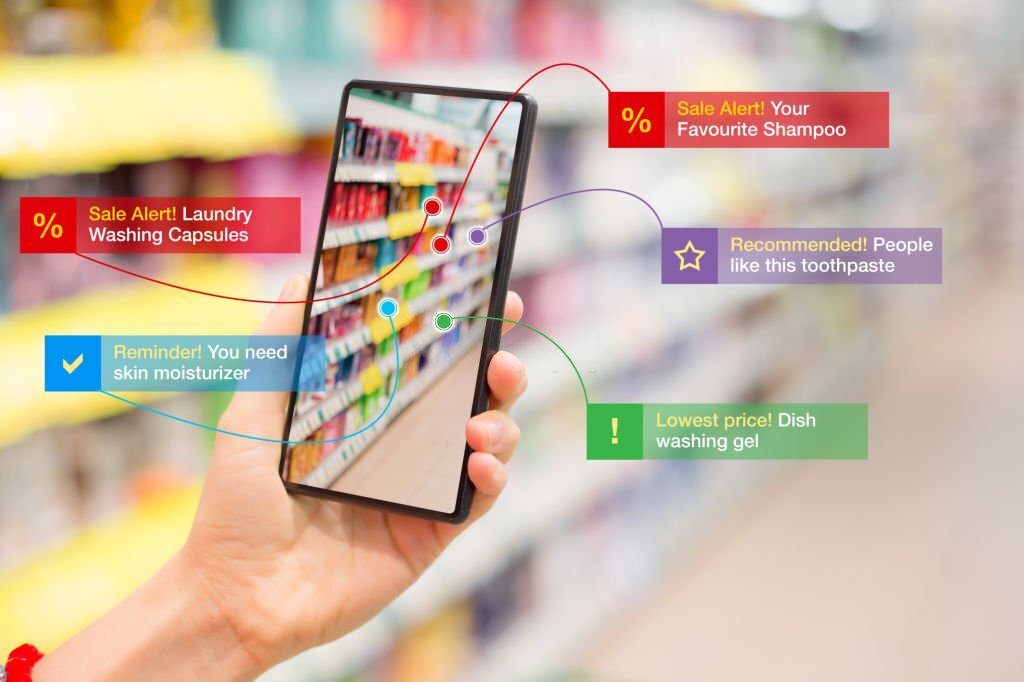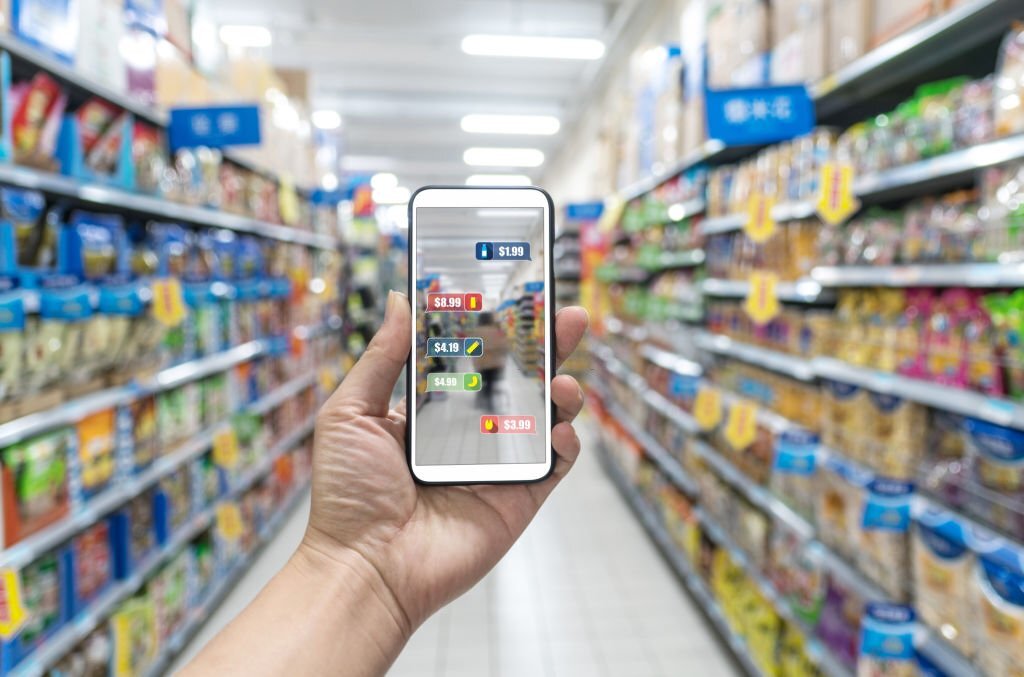Consumer Goods companies are under continued pressure to improve consumer loyalty and will focus on transforming field execution operational capabilities by unifying Route to Market (RTM) and planogram capabilities with computer vision. In a store, it often happens that items are misplaced, or shelves are empty.
Manufacturers spend a lot of time, effort, and money to make sure that their products are appropriately distributed and displayed properly on retailer’s shelves. In the past, this required extensive training and effort on the part of the CPG field sales rep and recording photos of the shelves with a mobile phone and storing those on a server. But by leveraging available new technologies, AI, and commonly available technology, a mobile system can make the process more manageable and accurate than it is now.
The Solution
The solution (and its mobile app) uses Computer Vision and Image Recognition (IR) capability to help with eliminating out of stocks and overstocks. Used correctly, a CPG field sales rep will be able to use the tool to easily complete accurate audits in the store. The solution will also update live report data.


What is Computer Vision?
The system allows companies to quickly and easily build complex applications that use advanced AI to process images, deep machine learning, and natural language.
The Image Classification technology can be used to train deep learning models. Once in place, it can recognize and classify images, including visual search, brand detection, and object identification. It operates simply, without the need for a data scientist to make it work.
There are pre-trained classifiers that cover topics such as Food, Scene, Multi-Label Image, and General image, supporting over 1,000 everyday objects. But the real power of Computer Vision and Object Detection technology is in training your own image classifiers, allowing the system to solve a wide variety of IR use cases.
Access to the solution is commonly done through a standard REST API. This allows the app developer to use almost any language and still incorporate the IR system, allowing it to easily integrate into a company’s current architecture.
An Introduction to Planograms
The solution uses planograms as the training aid for custom image classifiers. Planograms are visual guides used to plan the distribution of goods in a retail store. They are also known as plano-grams, schematics, and POGs.
A typical planogram will consist of a diagram that shows the products sitting on the retailer’s shelves. The diagram will specify both the location of the item and the quantity in which they should be placed for customer selection.
Manufacturers spend a lot of time researching optimal placement using various rules and theories. Once they have determined the perfect layout, manufacturers will often send planograms out to their retailers ahead of new product shipments. This allows the retailer to plan accordingly for product delivery.
Many consumer goods organizations (including supermarkets) use planograms to manage shelf space, inventory turns, and profit margins. Apparel brands and other CG industries that are focused on presentation will use planograms to illustrate the desired look as well as identifying the products.
The use of planograms allows stores in different locations to have the same look and feel, providing the consumer with a high-quality showcase of retail products wherever they are located.
How it Works
Computer Vision is now readily available, AI-driven image recognition system that allows for simple implementation. The system requires the training of image classifiers to identify and classify objects in submitted images.
Planograms are already in wide use, and they provide a visual representation of the retail shelves where products are kept. Since the same planogram is sent to all retailers of a manufacturer’s goods, they represent a universal guide to all of the store shelves for that product.
Now that we have a universal guide to all of the store shelves, it can be used to create the image classifier for the vision service. The planogram is uploaded to the service via the REST API, and objects can be identified as needed.
Once we have the image classifiers in place for the relevant planograms, the rest of the app can be implemented. The workflow is as follows:
- The CPG field sales rep visits the retail location and takes a picture of the shelves using the developed app. Care should be taken to reasonably match the image to the planogram for that location.
- Once the picture has been taken, the sales rep presses or taps a button to process. The app will then send the image to the vision process in the cloud
- The vision system will process the image and identify objects according to the image classifier previously trained using the relative planogram.
- Once finished, the solution will return the list of objects, including present and missing items, to the app.
- When the app gets the result, the CPG field sales rep will immediately know which items need to be replenished or reset the stock. The results can be used to feed a data collection system for further analysis.
Through the use of the solution, the sales rep can quickly complete audits in store. The solution can make it easier to manage out of stocks and complete accurate merchandising activities, including the need for new product shipment.
Leverages Existing Assets
One of the major strengths of the solution is that it can leverage existing assets in a company. Many CPG field sales reps already carry tablets and other smart devices that can run the required app. The solution can also be used on varying platforms. Automatic item recognition also helps for omnichannel retail strategies: with real-time shelf monitoring, the store can be used as a warehouse for online orders.
System-Wide Reporting
The solution can be used to automate retail product reporting back to a central location. In the case of multiple CPG field sales reps, this capability allows the manufacturer to more accurately plan shipments of goods to needed areas.
Since the data collection happens faster than the typical sales rep call, manufacturers have more up to date sales numbers. This information, when used with on-demand or just-in-time (JIT) manufacturing, allows the company to quickly respond to consumer demands accordingly.
Simplified Training
The solution simplifies the training of the sales rep by making it a visual process. The app is designed to lead the user by displaying the planogram of choice. The sales rep can use this image to quickly snap a store shelf image for processing.
Since the solution is identifying the images, the sales rep will not need to be as well versed on every retail product. Perhaps more importantly, the system will be able to identify the missing goods instead of relying on the sales rep.
Because the solution identifies the objects on the retailer’s shelves, both present and missing, there is less of a chance for accidental product placement and reporting. This will help to ensure that the manufacturer’s goods are appropriately represented across all of the retailer locations.
AI and image processing can be a powerful tool when it comes to products in the field. It can help solve many current problems manufacturers struggle with, including out of stocks, product placement, and CPG field sales rep training. Ivy Mobility specializes in advanced solutions to help you get the most out of technology in your business. To find out how computer vision and AI can enhance your merchandising and displays, contact us for a demo here.